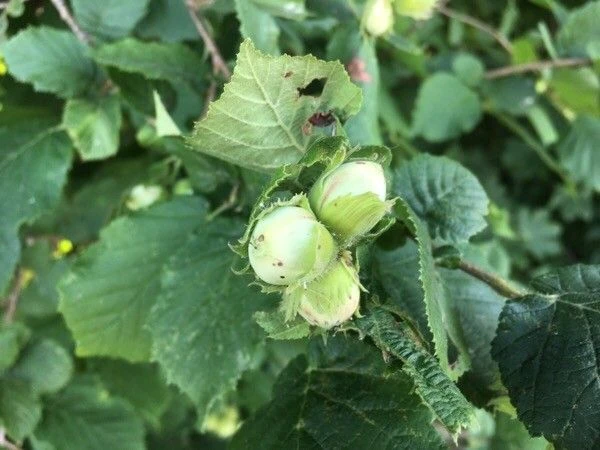Common Hazel
(Corylus avellana)
Common Hazel (Corylus avellana)
/
/

Halbe Marianne
CC BY-SA 4.0













































Estimated Native Range
Climate Requirements for San Luis, Arizona
| This Plant | Your Site | Plant Suitability for Your Location | ||
|---|---|---|---|---|
| • Precipitation | 5" - 142" | 3" | Your precipitation may be insufficient for this plant. Irrigate N" / year. | Irrigate N" / year |
| • High Temp. | -54°F - 102°F | 107°F | Your summers may be too hot for this plant. | Too hot |
| • Low Temp. | -14°F - 88°F | 41°F | Your winter temperatures are normal for this plant | Excellent |
Summary
Common Hazel is appreciated for its multi-stemmed, bushy habit, and its ability to form dense thickets, making it suitable for use as a hedge or in wildlife gardens. It provides food and habitat for wildlife, particularly squirrels and various bird species. In cultivation, it adapts well to a range of soil types, provided they are well-drained, and it can grow in full sun to part shade. While it requires medium amounts of water, it is relatively low maintenance once established. Gardeners should be aware of its potential to spread and become invasive outside its native range.CC BY-SA 4.0
Plant Description
- Plant Type: Tree, Shrub
- Height: 12-20 feet
- Width: 8-15 feet
- Growth Rate: Moderate
- Flower Color: N/A
- Flowering Season: Spring, Winter
- Leaf Retention: Deciduous
Growth Requirements
- Sun: Full Sun, Part Shade
- Water: Medium
- Drainage: Slow, Medium, Fast
Common Uses
Bee Garden, Bird Garden, Butterfly Garden, Deer Resistant, Edible*Disclaimer: Easyscape's listed plant edibility is for informational use. Always verify the safety and proper identification of any plant before consumption., Hedges, Low Maintenance, Potted Plant, Street Planting
Natural Habitat
Woodlands, forest edges, and traditional agricultural landscapes
Other Names
Common Names: European Filbert, European Hazel, European Hazelnut, Common Hazel, Hazel, Barcelona-Nuts, Giant Filbert, Filbert, Cobnut, Hassel
Scientific Names: Corylus avellana, Corylus avellana f. laciniata, Corylus avellana f. aurea, Corylus grandis, Corylus laciniata, Corylus avellana var. fusco-rubra, Corylus avellana var. pendula, Corylus avellana var. sylvestris, Corylus sylvestris
GBIF Accepted Name: Corylus avellana L.